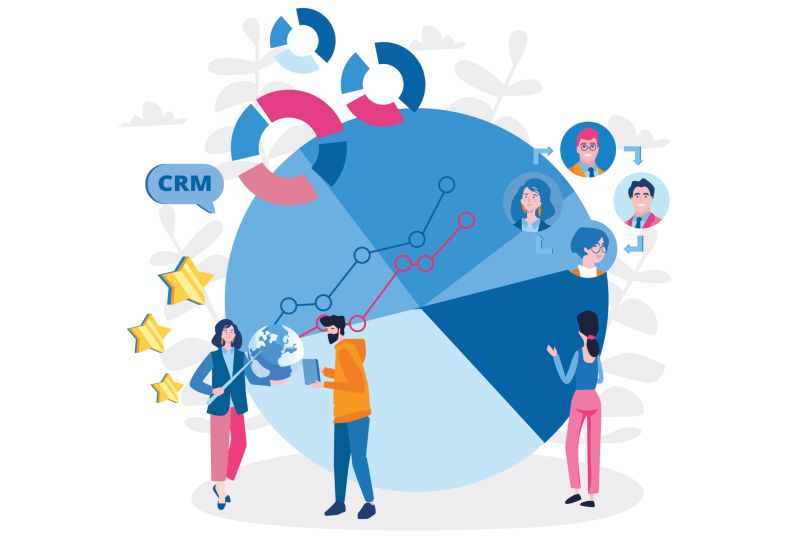The moment a salesperson starts asking Kyle Coleman qualification questions is the moment they’ve lost him as a customer.
The questions may be slightly different for each sales team, but most of them will sound familiar to any SDR: How big is your company? How much funding do you have? Are you a decision-maker? And so on.
They’re part of the popular BANT lead qualification process, which involves assessing a customer’s budget, authority, need and timeline for the product to determine whether they’re a fit for your company. But in today’s information-rich buying process, the questions come off as irrelevant and impersonal, said Coleman, who is VP of revenue growth and enablement at Clari.
“They’re not asking questions that have anything to do with the solution and the value that I may realize from this product.”
“It just doesn’t seem organic,” Coleman said. “It doesn’t seem like they actually care about what I’m trying to make happen. They’re not asking questions that have anything to do with the solution and the value that I may realize from this product.”
Lead qualification is still an important part of the sales process. It’s how reps can ensure they’re bringing on the right customers, leading to lower rates of churn and higher lifetime value. However, Coleman believes the traditional process is broken.
It doesn’t make sense to put the onus on the customer to meet a specified criteria. A better approach would be to start with an in-depth understanding of the customer, serving as a consultant and helping the buyer determine whether your product is or isn’t a fit for them.
It’s about lead education, Coleman said.
“It shows your prospects that you really care about them, that you understand them and that you want to help them,” Coleman said. “You’re setting the stage early for a more consultative sales cycle.”
Here’s how to pull it off:
Tips for Modern Lead Qualification
- Define your target addressable market with data. Tracking customer intent and interest allows reps to focus on prequalified prospects.
- Provide SDRs with the tools they need to have consultative conversations. They need a firm grasp on the buyer, the product and the marketing material.
- Incorporate lead education checkpoints in the SDR compensation plan. Tracking and rewarding the in-roads a rep makes can incentivize lead education behavior.
- Create a knowledge-transfer process. SDRs should fill AEs in on all relevant prospect information to build on the sales process.

Prequalify Your Leads Through Data
As Go Nimbly’s CRO, Troy Conquer is charged with helping the sales team identify the companies that could benefit most from its product. The problem is, almost every company could use the revenue operations support services it offers, he said.
That’s why a key part of Conquer’s lead qualification strategy is to equip the sales team with a defined target addressable market. The first step in that process is to gather as much information as possible about existing customers, prioritizing the biggest revenue drivers.
Go Nimbly’s ideal customers are B2B SaaS companies at 150 employees and above, Conquer said. They typically have a sales and customer success team of 40 people or more, bring in $10 million in revenue a year and use Salesforce and a suite of sales automation tools. Those benchmarks informed an algorithm in Salesforce that, by pulling information from ClearBit and Crunchbase, provided its five-person sales team with a narrow list of customers to focus on.
“Hopefully, we can open a conversation with the ones at the top of that list.”
But not all of those companies need revenue operation services. So, the next layer in the strategy is to determine which customers are showing interest in RevOps, Conquer said. Go Nimbly gathers that information using Bombora, a software tool that tracks what B2B customers are searching for and engaging with online.
“Bombora will tell us if employees at a company like Outreach are searching for sales operations, sales strategy or other terms we’ve identified as high-value to us,” Conquer said. “We’ll get that information in our CRM once a week.”
The final prequalification step is to figure out which customers are interested in Go Nimbly specifically. Through marketing software, they can track those who spend time on its website or click on its marketing material, and move them to the top of the list.
Through that information-gathering process, Go Nimbly’s reps are able to check off many of the questions they would typically ask to qualify a customer. They can instead spend their time having more informed, engaging conversations to match the product to the customer’s needs.
“When I’m thinking about qualifying, that’s the part of the customer journey we focus on and all of the attributes we use to understand who to focus our time on,” Conquer said. “Hopefully, we can open a conversation with the ones at the top of that list.”
Equip SDRs With the Tools They Need to Have Consultative Conversations
Once an SDR gets on the phone with a prospect, the goal in a “lead education” strategy is for them to serve as a consultant. It’s about putting the customer’s issues first and then working backward to see if the product is a fit to solve it.
“The education component is all about understanding what is holding a customer back and talking about it in an informed way to show them that you have this conversation all the time,” Coleman said.
It’s a long way from following a checklist of qualification questions. That’s why the strategy needs to start with sales leaders making education a priority in both training and its enablement strategy.
“The education component is all about understanding what is holding a customer back and talking about it in an informed way to show them that you have this conversation all of the time.”
There are three main buckets of knowledge that an SDR needs to have effective consultative conversations — an understanding of the customer, the product and the marketing content. A rep needs to understand the responsibilities and pain points of each of their buyer personas in order to have a strategic conversation that’s relevant to them. They need to understand who their own competitors are and what they do that’s better and worse so that they can accurately assess their own product’s fit for a company. And they need to know how to weave use-cases and marketing content into a conversation to provide additional information that the buyer can’t just find online.
“If you can do those three things and hammer them home in onboarding and training, that’s how you guarantee that they will be continually educating the people that they’re talking to,” Coleman said.
As an internal bonus, it also prepares the SDRs for future roles in the company.
“That type of training that you give them, that’s really a foundation of knowledge that they can build on, whatever they go and pursue in the future,” Coleman said.

Establish Benchmarks to Track Engagement
Still, it takes time for an SDR to build trust and understand a buyer’s issues. Sometimes it can happen in just one conversation, but often, a rep might be in contact with a prospect for months before they’re ready to buy.
That’s why Clari has built momentum benchmarks or “Managed by Objectives” into the SDR compensation plan to incentivize making in-roads on an account. Those goals might be to talk to two frontline sales managers, five individual salespeople and get five people to come to a virtual event. If a rep checks those boxes, they’ll receive partial commission.
“The outcome of this relationship that you build in this educational cadence that you have with content and conversation is a really in-depth understanding of their use case.”
In the process, they’ll have created more awareness about the product within a company and developed a better understanding of what issues matter most to their buyer.
That way, once the SDR speaks to a decision-maker, they can make the conversation all about them. They can speak to their pain points, where the product fits and determine whether that aligns with their strategy. It may take more work upfront, but that information can help speed up the rest of the sales cycle, Coleman said.
“The outcome of this relationship that you build in this educational cadence that you have with content and conversation is a really in-depth understanding of their use case,” Coleman said. “That’s what you’re qualifying around.”
Helping Customers Come to Their Own Conclusion
Not every customer that goes through the prequalification process and the relationship-building phase is going to be a fit.
Customers often come to Go Nimbly wanting RevOps consulting, but they don’t know what that service entails. Asking prospects what their pain points are and citing examples of how other customers have used their services helps the customer get a better picture of their services.
Through that conversation, a customer might tell them they’re looking to outsource an entire RevOps team at a price competitive to what they might be able to hire offshore, Conquer said. If that’s the case, it’s on the rep to help the buyer understand where Go Nimbly can help — and the price point that they should expect.
If it’s not a fit, then the customer will often come to their own conclusion during the course of that conversation, Conquer said.

Transfer the Relationship to the AE
For customers that are a fit, the last phase is a transfer of knowledge. While the customer’s information is ideally logged in the company’s CRM, the rep has just spent a lot of time building a relationship with that buyer.
“We really want them to have the takeaway of thinking about whether we are a fit for what they’re trying to make happen.”
To pass that forward in the sales cycle, Clari’s SDRs send an email to the AE with the prospect CC’d detailing everything that the customer is trying to make happen. At the end of it, they’ll offer the buyer an opportunity to add anything to the conversation.
Ultimately, a successful lead qualification strategy today is all about building a value-based relationship. It’s what sales teams owe the buyer, Coleman said.
“We don’t want to only be qualifying them to see if they’re a fit for us,” Coleman said. “We really want them to have the takeaway of thinking about whether we are a fit for what they’re trying to make happen.”




